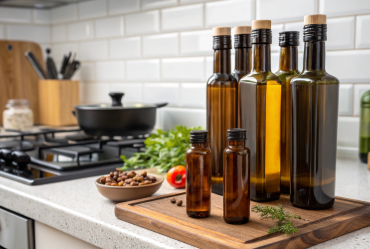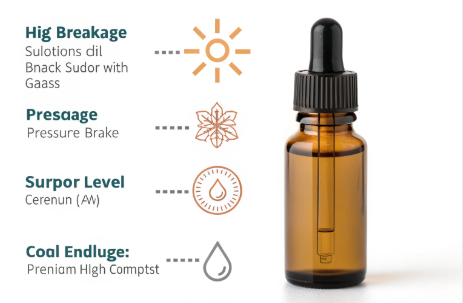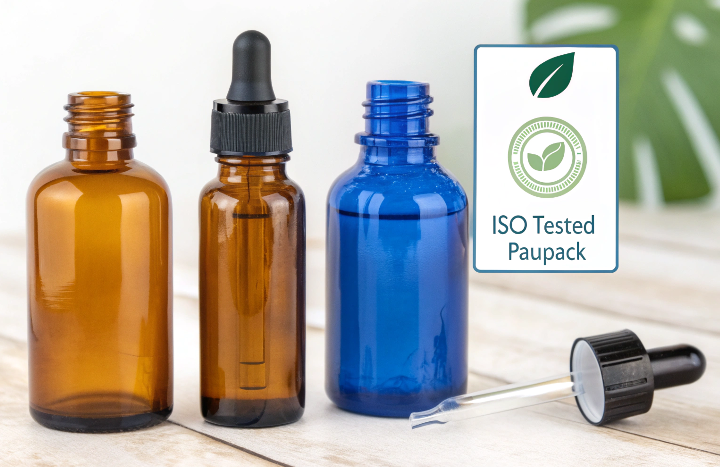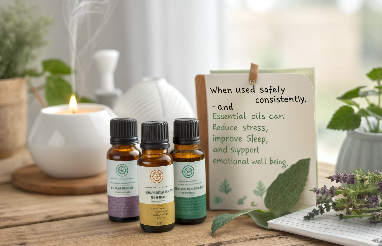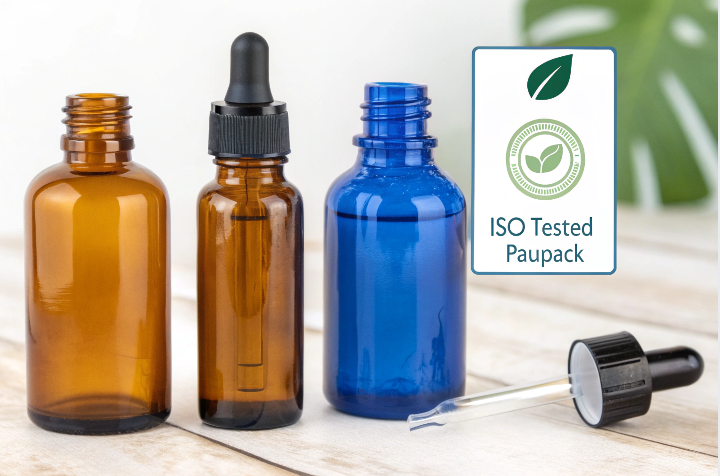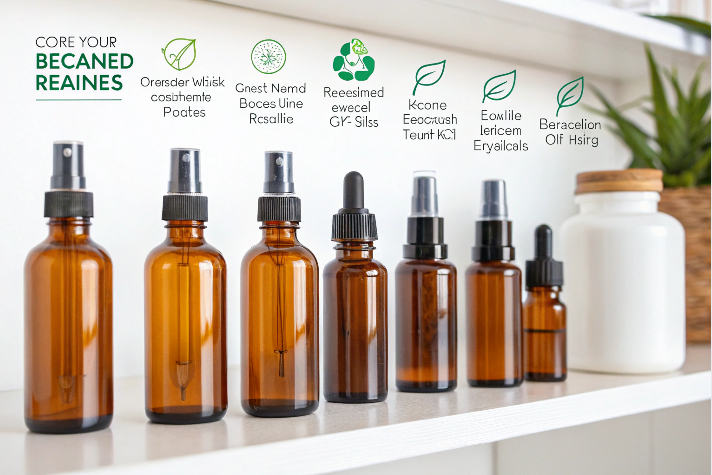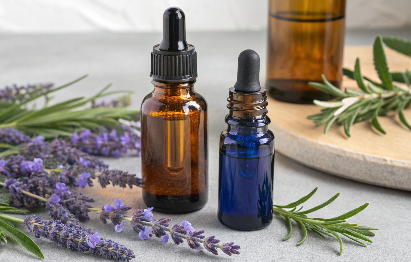Pressure build-up, temperature swings, and faulty closures can all lead to one costly disaster—your essential oil bottle bursting.
To prevent an essential oil bottle from bursting, ensure it's made of high-quality glass, avoid overfilling, use compatible closures, and store it away from heat and sunlight.
Let’s explore practical solutions to prevent bottle breakage, plus tips on repurposing, storage rules, and container compatibility—all vital for sourcing managers and beauty brands alike.
Introduction to Essential Oil Safety
When it comes to essential oils, safety should always be the top priority. Essential oils are highly concentrated plant extracts that can be beneficial for health and wellness, but they can also be hazardous if not handled properly. In a living space, it’s essential to ensure that essential oils are stored and used safely to avoid any potential risks. This is especially important in homes with pets or young children, where a traditional sofa or new sofa may be a hub for relaxation and play. To create a safe and cozy atmosphere, consider using throw pillows and a coffee table to define the space, while keeping essential oils out of reach.
Understanding Essential Oil Bottles
Essential oil bottles are designed to protect the oils from light, heat, and air, which can cause them to degrade or become contaminated. When choosing essential oil bottles, look for high-quality materials, such as glass or stainless steel, that can withstand the potency of the oils. A good quality sofa, such as a sturdy frame with durable fabrics, can provide a comfortable seating area for relaxing and enjoying essential oils. However, it’s crucial to keep essential oil bottles away from couch cushions and sofa sleepers to avoid any accidents.
Causes of Essential Oil Bottle Bursts
Essential oil bottle bursts can occur due to various reasons, including excessive heat, pressure, or impact. When an essential oil bottle bursts, it can release a strong and potentially hazardous fragrance into the air, which can cause irritation or allergic reactions. To prevent such incidents, it’s essential to store essential oil bottles in a safe and stable location, away from direct sunlight and heat sources. Consider using a modular sofa with built-in storage or a chaise lounge with removable covers to keep essential oil bottles out of reach.
How to repurpose essential oil bottles?
Throwing away those beautiful amber glass bottles feels like a waste, right?
You can clean and repurpose essential oil bottles for DIY blends, travel sprays, serums, home diffusers, or even as sample packaging for new formulations.
Why Should You Repurpose?
Repurposing reduces waste and cost while showcasing your commitment to sustainability—a quality that both customers and investors value. As brands move toward circular packaging models, giving bottles a second life helps align with that green mission.
How to Clean Used Essential Oil Bottles
-
Soak in hot, soapy water to loosen residue.
-
Use rubbing alcohol or white vinegar to dissolve oils.
-
Rinse thoroughly and air-dry upside down.
-
Sanitize with boiling water if planning to reuse for skincare.
Repurposing Ideas with Recycled Velvet
|
Use Case |
Bottle Type |
Notes |
|---|---|---|
|
DIY Roll-ons |
10ml roller bottles |
Add carrier oil + essential oil blend |
|
Face Serum |
15ml dropper bottles |
Ideal for travel-size skincare lines |
|
Home Diffuser Refill |
30ml screw cap bottles |
Label clearly to avoid misuse |
|
Aromatherapy Sprays |
50ml spray head bottles |
Blend with witch hazel or hydrosol |
|
Tester Kits |
5ml mini bottles |
Low-cost way to upsell product lines |
At PauPack, we design bottles not only for primary use but also for reusability. Our coatings and labels are easy to remove, making upcycling more feasible for beauty brands and refill stations.
How do I stop my oil bottle from leaking?
A beautiful product ruined by leakage? That’s every sourcing manager’s nightmare.
To prevent leaking, choose bottles with tight-sealing caps, test fitments, use liners or droppers, and ensure filling lines are precise.
Common Causes of Leaking
-
Misaligned closures – especially in pump and spray caps.
-
Low-quality threading – causes improper tightening.
-
Thermal expansion – liquid expands, forcing out oil.
-
O-ring failure – in dropper or pump bottles.
Best Practices for Leak-Proof Packaging with Durable Materials
1. Choose Quality Closures
At PauPack, we supply matched cap-bottle systems tested for pressure resistance. For essential oils, a tamper-evident cap with a dropper insert offers both functionality and security.
2. Consider Shrink Bands or Seals
This adds a second layer of protection, especially useful during transport or e-commerce shipping.
3. Fill With Precision
Overfilling increases pressure. Our partners often adopt an 85-90% fill level guideline to allow for natural oil expansion.
4. Use Compatibility Testing
Always test your oils with the bottle materials—especially with strong citrus or mint oils that may degrade certain plastics or rubber.
5. Opt for UV-Protective Amber Glass
UV light can heat the oil, leading to internal pressure. Our amber and cobalt blue bottles mitigate this risk effectively.
What is the 30/50/20 rule for essential oils?
Confused by dilution math or safe blending ratios?
The 30/50/20 rule is a guideline to mix essential oils for safe use: 30% base notes, 50% middle notes, and 20% top notes.
Why Does This Matter?
This rule not only balances the scent but also ensures synergy, performance, and user safety—especially for beauty brands creating custom fragrances or serums.
Understanding Essential Oil Notes
|
Type |
Role |
Examples |
|---|---|---|
|
Top Note |
First impression |
Lemon, Peppermint, Bergamot |
|
Middle Note |
Heart of the blend |
Lavender, Geranium, Eucalyptus |
|
Base Note |
Lingering aroma |
Sandalwood, Patchouli, Vetiver |
Application in Product Formulation
If you’re creating a 10ml roll-on blend:
-
3ml Base Note oils
-
5ml Middle Note oils
-
2ml Top Note oils
Pro tip from PauPack: Design your bottles to reflect the blend’s identity. Our dropper bottles are available with gradient tints to visually cue users into base or top-heavy blends.
When Not to Use This Rule
For clinical or therapeutic uses (like wound care or aromatherapy in hospitals), safety and dosage override aroma balance. Work with certified aromatherapists and use dilution charts accordingly.
Can you put essential oils in stainless steel bottles?
Stainless steel might sound sleek and modern, but is it suitable for storing essential oils?
In general, essential oils should not be stored long-term in stainless steel bottles due to potential metal reactivity.
The Chemistry Behind It
Essential oils are highly concentrated. Some contain aldehydes, acids, or phenols that can corrode metals over time—particularly if the steel is low grade or not coated.
When Is Stainless Steel Acceptable?
|
Use Case |
Is It Safe? |
Reason |
|---|---|---|
|
Short-term storage (<24h) |
Yes |
Travel sprays or sample testers |
|
Coated Stainless Steel |
Yes |
Epoxy-lined to prevent oil-metal contact |
|
Pure Internal Use (drinking) |
No |
Essential oils not recommended internally |
|
Long-term storage |
No |
Risk of reaction, corrosion, leaching |
Better Alternatives with Eco Friendly Materials
-
Amber Glass: Blocks UV and has zero reactivity.
-
Aluminum Bottles with Epoxy Liner: Lightweight and safe.
-
Borosilicate Glass: Heat-resistant and chemically stable.
At PauPack, we offer stainless-style aesthetics in airless pump bottles that are 100% non-reactive. These are ideal for brands that want a premium metallic look without compromising safety.
Conclusion
Preventing your essential oil bottles from bursting, leaking, or degrading is all about quality materials, proper storage, and smart design—and PauPack is here to help you nail all three.




